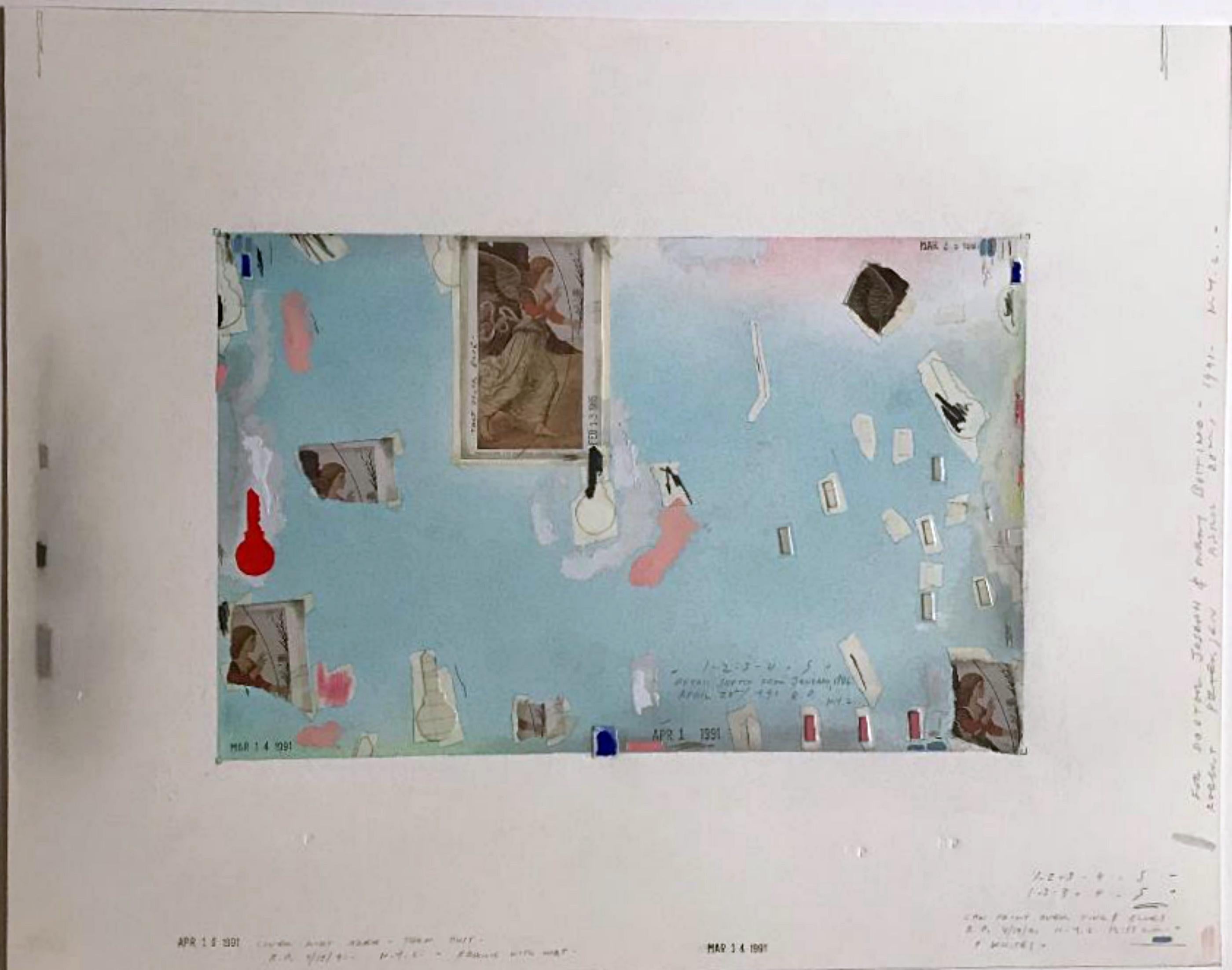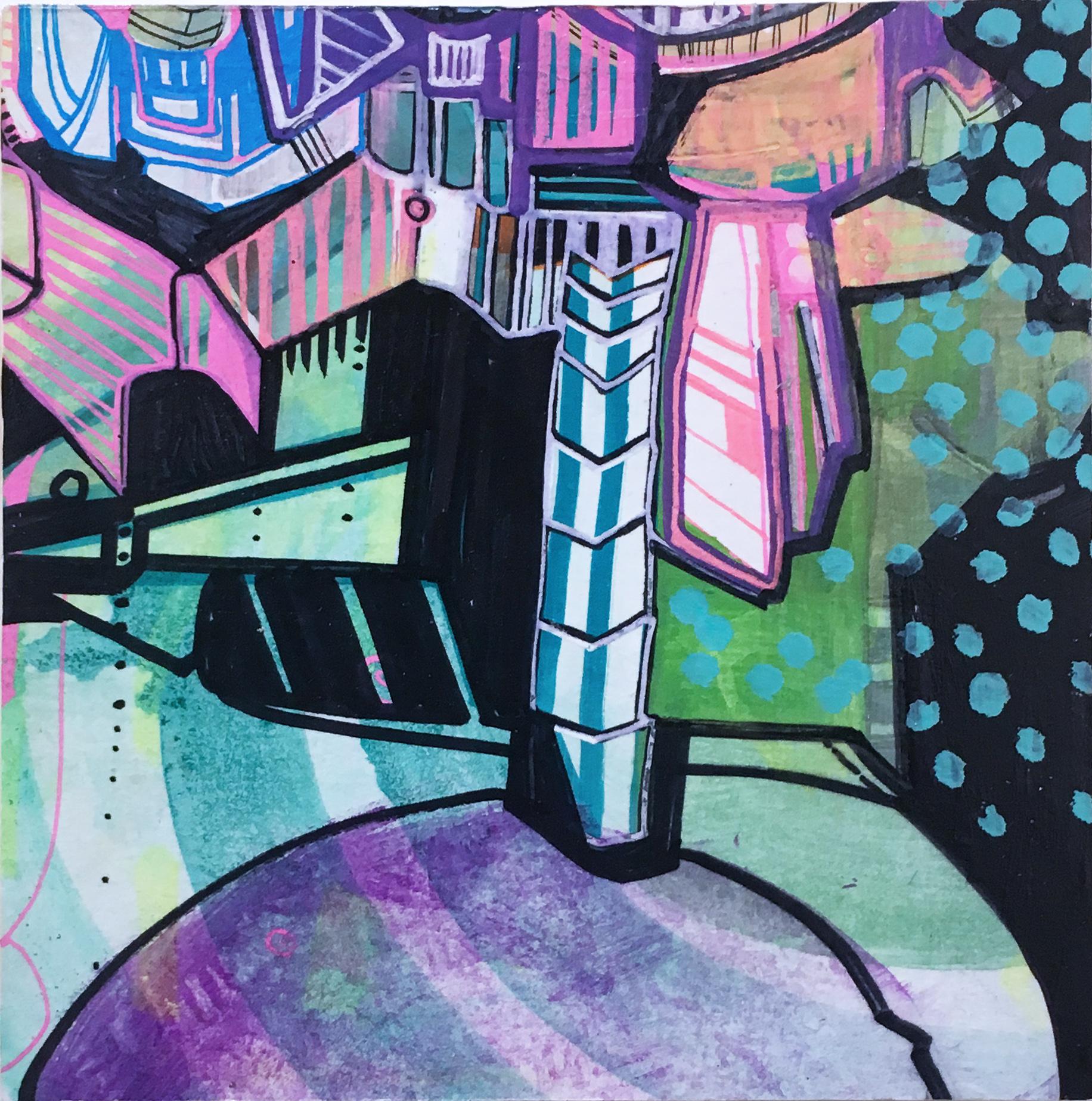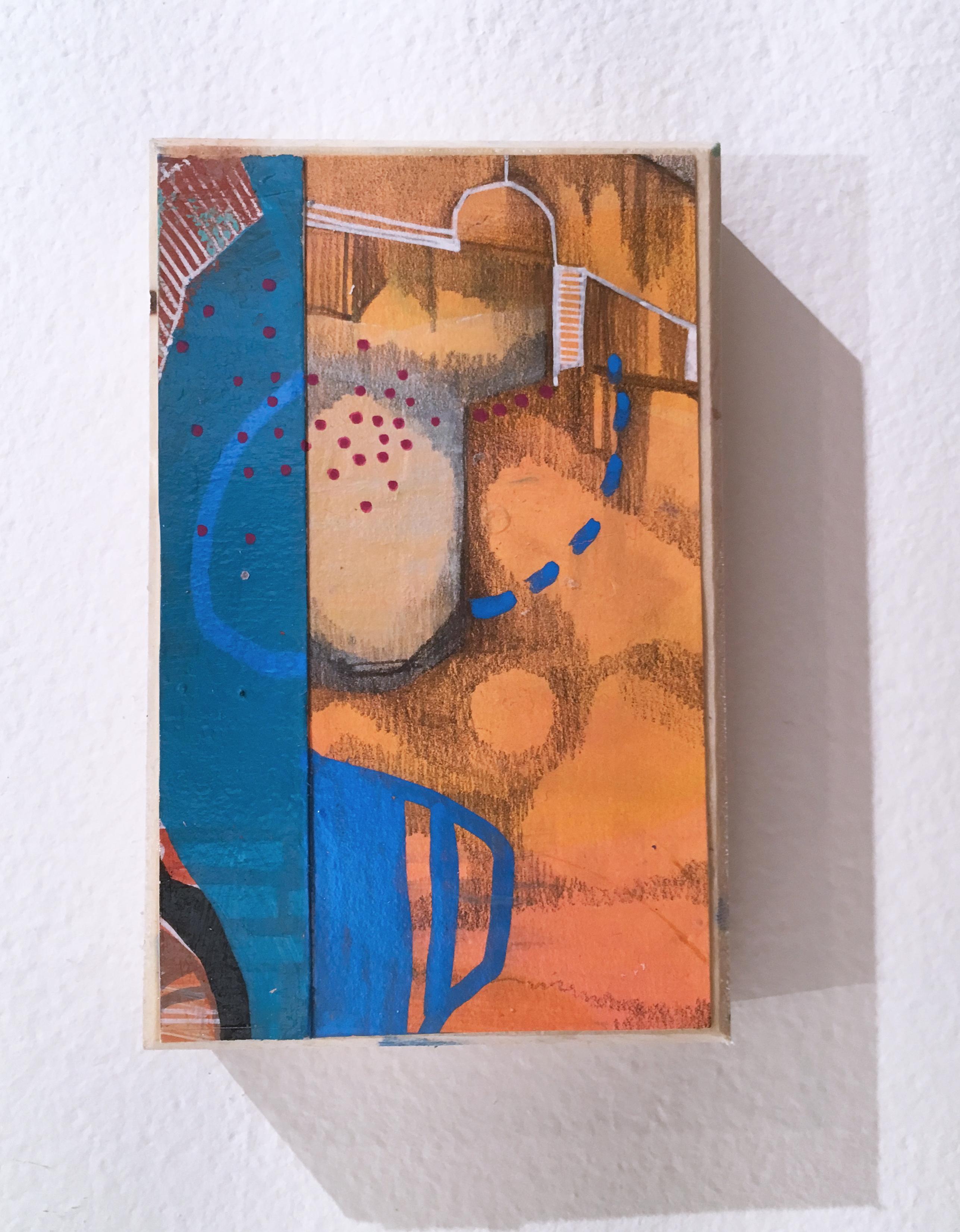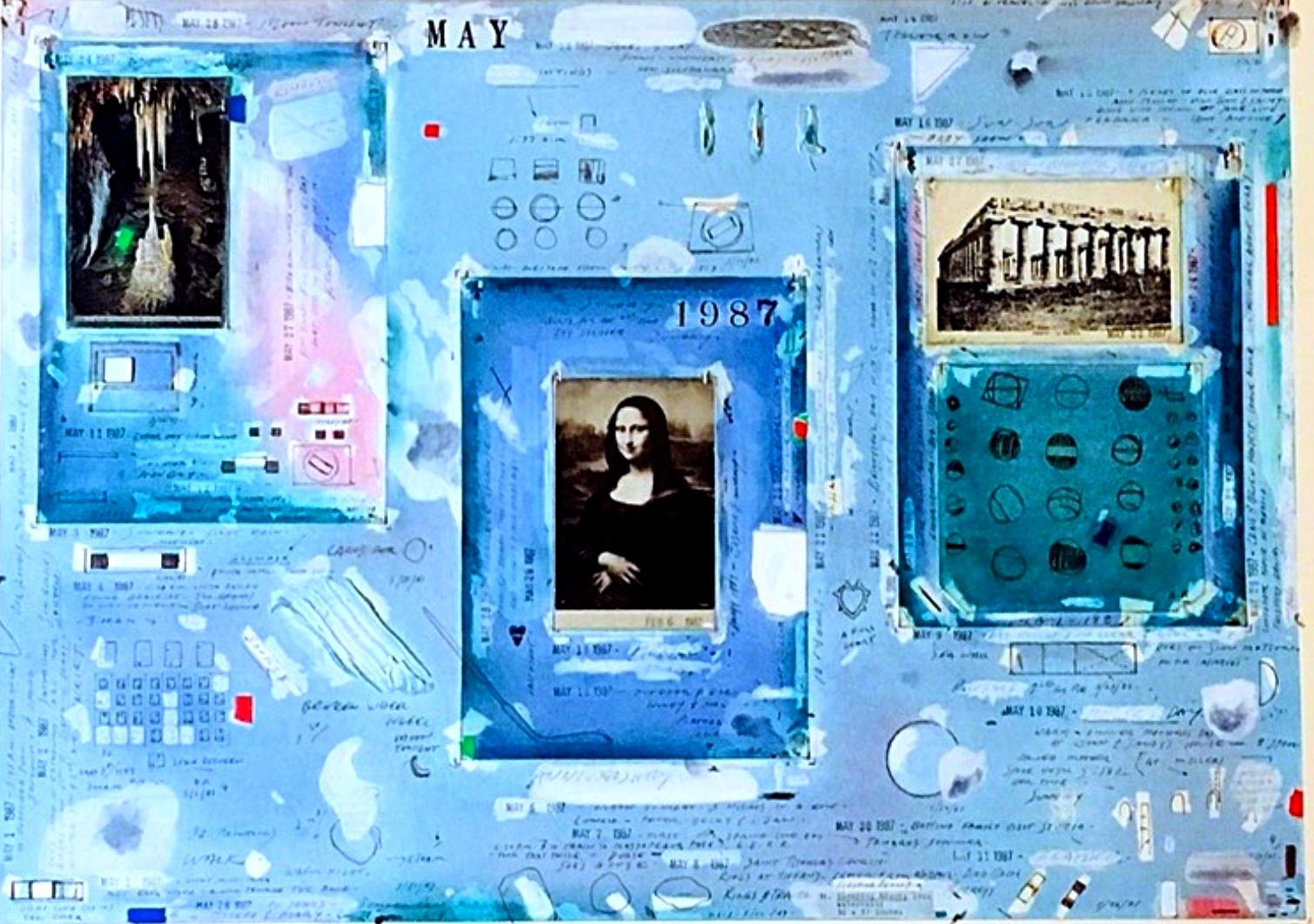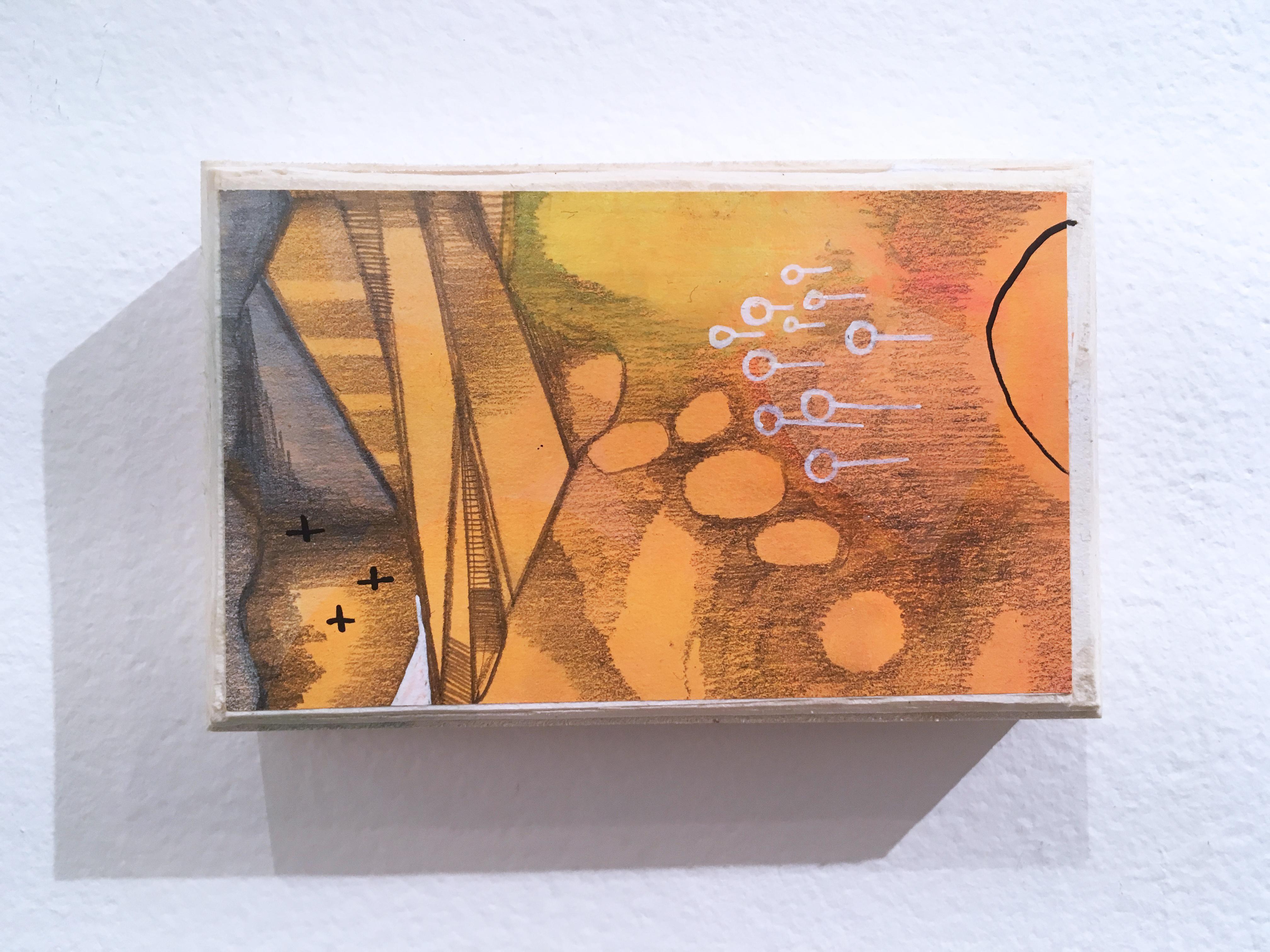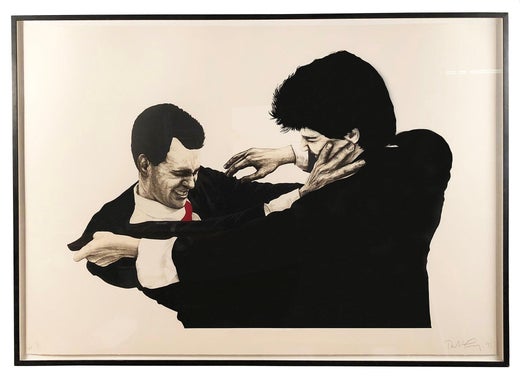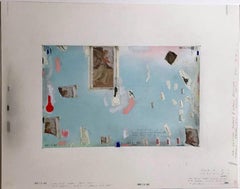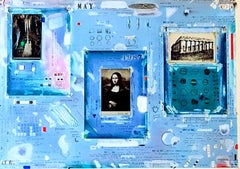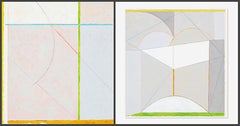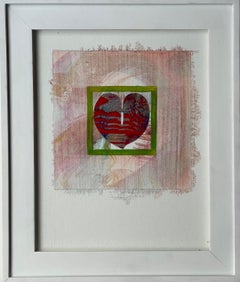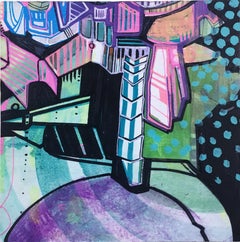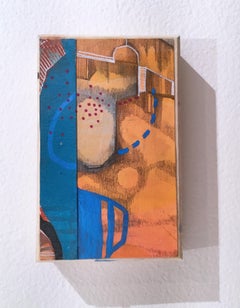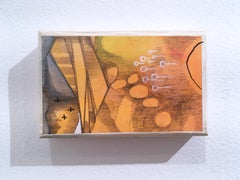Robert Longo
Pressure, 1983
Acrylic and Graphite on Paper
Signed and dated 'Robert Longo 83’ (lower right) in graphite
Frame included:
Floated and framed in a museum quality frame with UV plexiglass
This is a unique painting
"Pressure " [on God], Robert Longo's unique acrylic and graphite work on paper, was created during the same period as his iconic work, simply labeled "Pressure", now in the permanent collection of the Museum of Modern Art in N.Y. Whereas the latter depicts a young man, the present work, titled "Pressure on Heaven", then deliberately changed to "Pressure on God", is more ethereal in subject matter, though the lone youth's image is still present in the composition.
From Lexander magazine:
"In the excerpt from Neal Benezra’s article about 1980s art in the previous post, he writes, “Robert Longo’s Pressure might well be the most representative work of art of the 1980s.” I would go further and state that it is the definitive work of the 1980s—the penultimate visual anthem of the era—and most especially the period between 1979—1987, during which the musical genres of gothic rock and deathrock flourished and achieved their greatest artistic successes through the work of a variety of diverse bands including Bauhaus, Siouxsie and the Banshees, The Sisters of Mercy, and most appropriately to the subject of this article, Christian Death...Pressure is the penultimate visual anthem of non-conformists everywhere, and it’s relevance, as with all great works of art, is timeless." (March, 2013)
MOMA's director writes of the work "Pressure" in the museum's permanent collection:
Glenn Lowry: During the 1980s Robert Longo created a series of artworks known as Combines, integrating drawings with reliefs made of wood, aluminum, or Plexiglas. In Pressure, the artist intended to communicate a sense of oppression with the weight of an imposing skyscraper exerting a force on the brooding figure below, Robert Longo.
In the present work, the artist inverts the concept, suggesting that man isn't the only one oppressed; heaven and god are as well.
Measurements:
Framed:
34.5 inches x 49 inches x 1.25
Artwork:
29.75 inches x 43.25 inches
Robert Longo Biography:
Robert Longo was born in 1953 in Brooklyn and grew up in Long Island, New York. He graduated high school in 1970, weeks after the Ohio National Guard massacred several students at Kent State University who were protesting the U.S. invasion of Cambodia.
One of those killed was a former classmate of Longo’s, and his body was shown in a Pulitzer Prize-winning photograph that was seen across the world. The event shocked Longo, triggering his interest in political activism and media imagery.
In 1972, Longo received a grant to study restoration and art history in Florence. While touring the museums of Europe, he realized he wanted to make, rather than restore art. In 1973, Longo enrolled at Buffalo State College, where he worked for artists Paul Sharits and Hollis Frampton, who introduced him to structuralist filmmaking. Along with Charles Clough, Longo also co-founded Hallwalls (1974–ongoing), an alternative non-profit art exhibition space where he organized shows and talks with artists such as John Baldessari, Lynda Benglis, Robert Irwin, Joan Jonas, Bruce Nauman, and Richard Serra.
At Buffalo State, Longo started a friendship–that still exists to this day–with Cindy Sherman, and in 1977 the two moved to New York together, where Longo began working as a studio assistant to Vito Acconci and Dennis Oppenheim. That year he was included in the exhibition Pictures at Artist’s Space, curated by Douglas Crimp, which showcased work by a group of five young artists who were engaged with the politics of image-making, drawing from advertisements, newspapers, film, and television. The “Pictures Generation,” as they became known, included artists such as Cindy Sherman, Richard Prince, Louise Lawler, David Salle, and drew from semiotics and poststructuralist theory to investigate the way meaning is made and circulated in modern society. Their work often critiqued the anaesthetizing power of consumer capitalism and the indoctrinating effects of mass media. At his first solo show at Metro Pictures in 1981, Longo presented his charcoal and graphite Men in the Cities drawings, which instantly became icons of the “Pictures Generation,” and some of the most recognizable artworks of the 1980s.
Longo performed in New York rock clubs with the band Menthol Wars with Richard Prince, throughout the 1980s. During that period, he also designed numerous album covers, including Glenn Branca’s The Ascension (1981) and The Replacements’ Tim (1985). In 1986, he directed his first music video for New Order’s chart-topping song Bizarre Love Triangle, and the following year directed The One I Love, a video for R.E.M.’s first hit single.
Longo began working with diverse materials at increasingly ambitious scales. His Combines series, first exhibited in 1983, incorporated materials such as paint, graphite, wood, plaster, cast bronze, and steel in works that were part-painting, part-sculptural reliefs. Using Sergei Eisenstein’s theory of montage to juxtapose conflicting imagery and forms, they touched on many of the themes of war, alienation, and consumption that have remained central to Longo’s practice. The Combines were followed in 1990 by Black Flags, a series of cast bronze American Flags taking the forms of wall-hanging structures frozen mid-wave, free-standing pennants as sharp as missiles, and enormous impenetrable walls, all pointed critiques of US imperialism.
In 1989, Longo escaped a recession and the Gulf War by moving to Paris, where he lived and worked for three years, eventually returning to begin his Bodyhammers series of large-scale charcoal and graphite drawings of guns, and to direct the cyberpunk film Johnny Mnemonic, based on William Gibson’s text, which starred Keanu Reeves and Dolph Lundgren. Following the film’s release in 1996—a leap year—he began Magellan, a series of 366 small drawings, completing one each day from daily media sources. Taken together, the eclectic images of murders, funerals, concerts, sporting events, cops, superheroes, animals, and plants are a kind of channel scroll through the American subconscious, which became the lexicon for work to come.
Beginning in 1999, Longo began making large-scale charcoal wave drawings, his Monsters series, followed by The Freud Cycle, depicting Sigmund Freud’s consultation room and apartment in Nazi-occupied Vienna. On the one hand, the stormy seas counterbalance the cool rationalism of psychoanalysis, while on the other, the pairing suggests inner tempests. These images are what Longo considers “absolutes”, embodiments of the collective unconscious. In 2009, he completed a cycle of drawings of other absolutes—bombs, nebulae, roses, sleeping children, and sharks—that he called The Essentials, and which form a poetic creation myth.
Longo’s engagement with metaphysics continued in The Mysteries, a body of work completed from 2009 to 2014. Each drawing depicts a scene of beauty and contradiction: light streaming through cathedral windows and a forest; the eyes of a woman in a niqab and the reflection of clouds on a pilot’s visor. In 2014, following Black Lives Matter protests in Ferguson, Missouri and the declaration of an ISIS caliphate, Longo began The Destroyer Cycle, a series of works that distill scenes of power and violence from American media. Riot police, migrant ships, and terrorist attacks form a searing portrait of a world locked in perpetual crisis.
For an exhibition at Metro Pictures in 2014, Longo presented a series of twelve charcoal drawings, entitled Gang of Cosmos, that functioned as black and white translations of well-known paintings by Abstract Expressionists, including Willem de Kooning, Lee Krasner, Jackson Pollock, Ad Reinhardt, Joan Mitchell, and Mark Rothko, thereby creating his own version of this wholly American artistic legacy.
Longo continues to work with characteristic scale, precision, and perceptiveness, achieving images that, while drawn from recent history, would be otherwise impossible to see with the human eye. Longo’s latest body of work, A History of the Present, which he began in 2020, is informed by the Coronavirus Pandemic, the nation’s political upheaval, our tenuous ecological future, fueled by the artist’s personal experiences. Through this group of large-scale charcoal drawings, Longo seeks to focus on the power of the viewer and the individual’s capacity to create change, a celebration of freedom of expression.
-Courtesy PACE Gallery
